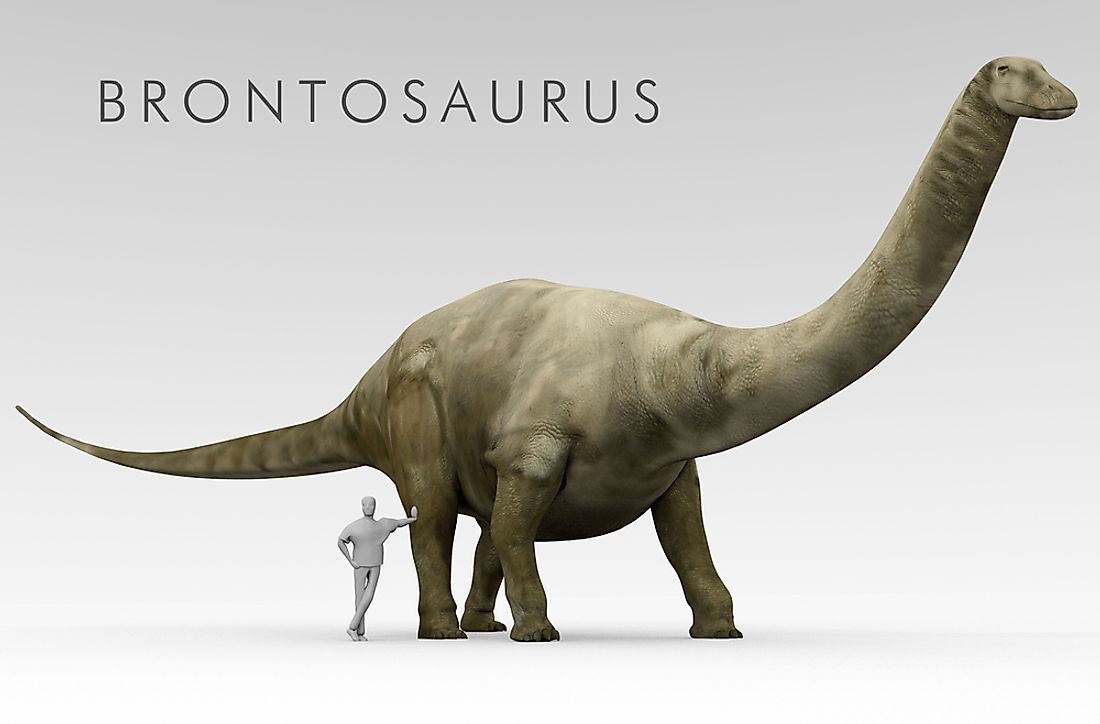Brontosaurus Facts: Extinct Animals of the World

Othniel Charles Marsh discovered and named the Brontosaurus (Greek for “thunder lizard”), a four-legged dinosaur in 1879. With at least three known species, this dinosaur lived in the Morrison Formation of present-day Western US during the late Jurassic Period, and became extinct by the end of the period. Perhaps one of the most controversially classified dinosaurs, paleontologists have reclassified the Brontosaurus several times since its discovery to an extent that some quarters believed that it did not exist entirely. As one of the most known dinosaurs, it continues to be featured prominently in films, postal stamps, and advertisements.
Scientific Classification
Brontosaurus belonged to the family Diplodocidae whose members constitute some of the longest creatures in the history of the world, such as Diplodocus, Supersaurus, and Barosaurus. In-depth classification placed this creature into a subfamily, Apatosaurinae. Belonging to the genus of Sauropod dinosaur, there are three different species of the Brontosaurus: Brontosaurus excelsus, Brontosaurus yahnahpin, and Brontosaurus parvus. Since the discovery of this dinosaur up to as late as 2015, not all paleontologists agreed on the classification, especially on the family and genus. Marsh named the species Brontosaurus excelsus in 1879 and estimated that it lived in the late Kimmeridgian age. Brontosaurus parvus, originally Elosaurus, dates to the mid-Kimmeridgian age. The oldest of these species is the Brontosaurus yahnahpin (or Eobrontosaurus for other sources), which dates to about 155 million years ago.
Physical Description
This dinosaur was a herbivore with a strong long neck that thinned from the torso to its relatively smaller head. Brontosaurus’ neck vertebrae were forked, had air sacs, and paired spines which made it stronger and probably fit for defense. The torso was bulky and connected to a long tail that thinned from the torso to the tail tip forming a whip-like shape. The two front limbs were weaker and relatively shorter than the hind limbs. On average, the largest mature species were 72 feet long from head to tail and measured up to 17 short tons. The vertebral formula included fifteen firm cervical bones, ten loosely attached dorsal bones, five sacral bones, and 82 caudal bones. All the forelimbs had strong humerus and a toe with a strong claw on each, while the hip bones had strong ilia and a pubic bone attached to the ischia forming a "lizard-hipped” shape.
Paleobiology and Paleoecology
Brontosaurus was a terrestrial animal, although initially it was thought to have spent most of its time partly submerged in swampy places. With its long neck, this herbivore browsed tall trees for food and held its neck high in the air when alert. Due to this dinosaur’s size, muscle movement, and recoil after each stride, it moved slowly and probably covered between 12 and 25 miles in a single day with an average 12-19 miles per hour speed. The claws were probably for defense, feeding, or grasping. There are several theories that exist which refer to Brontosaurus’ respiratory system that aim to explain its metabolic rates, including reptilian and avian respiratory systems. Brontosaurus was a solitary animal and during the time it existed, the ecosystem included forests, savannas, conifers, fungi, and green algae among others.











